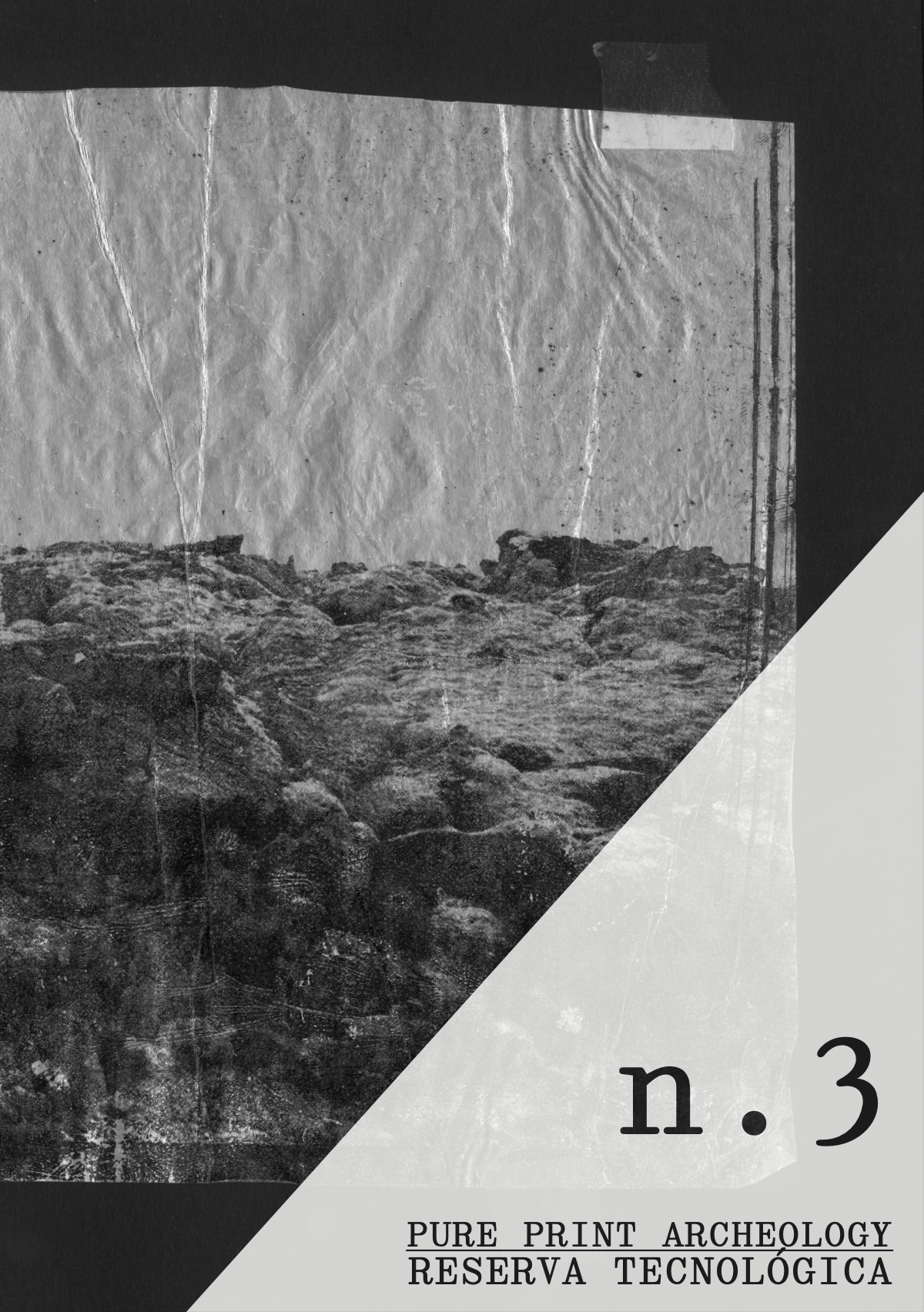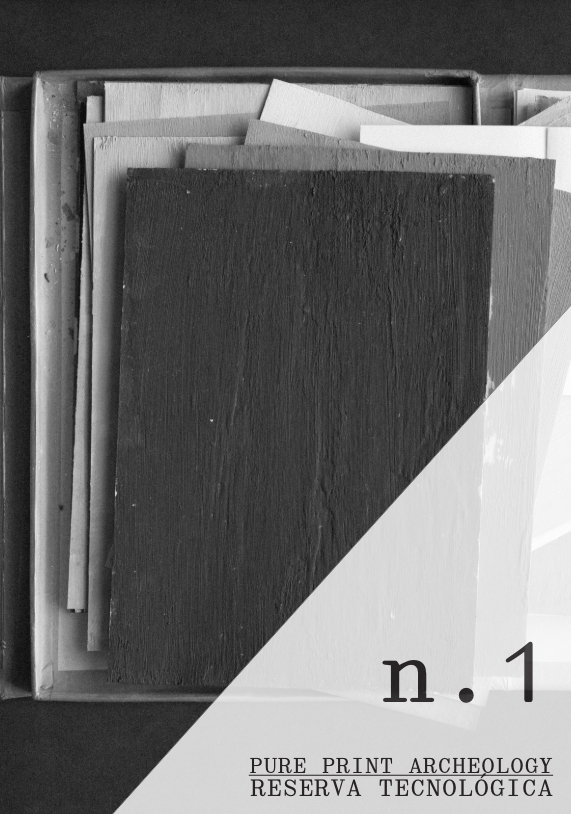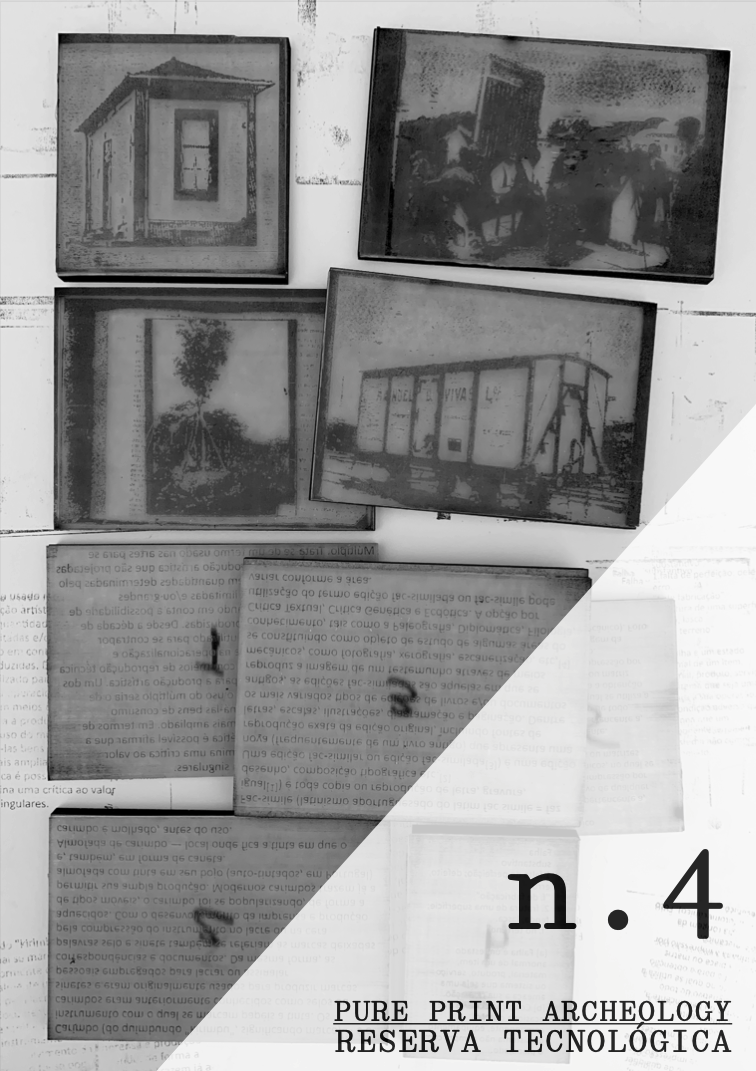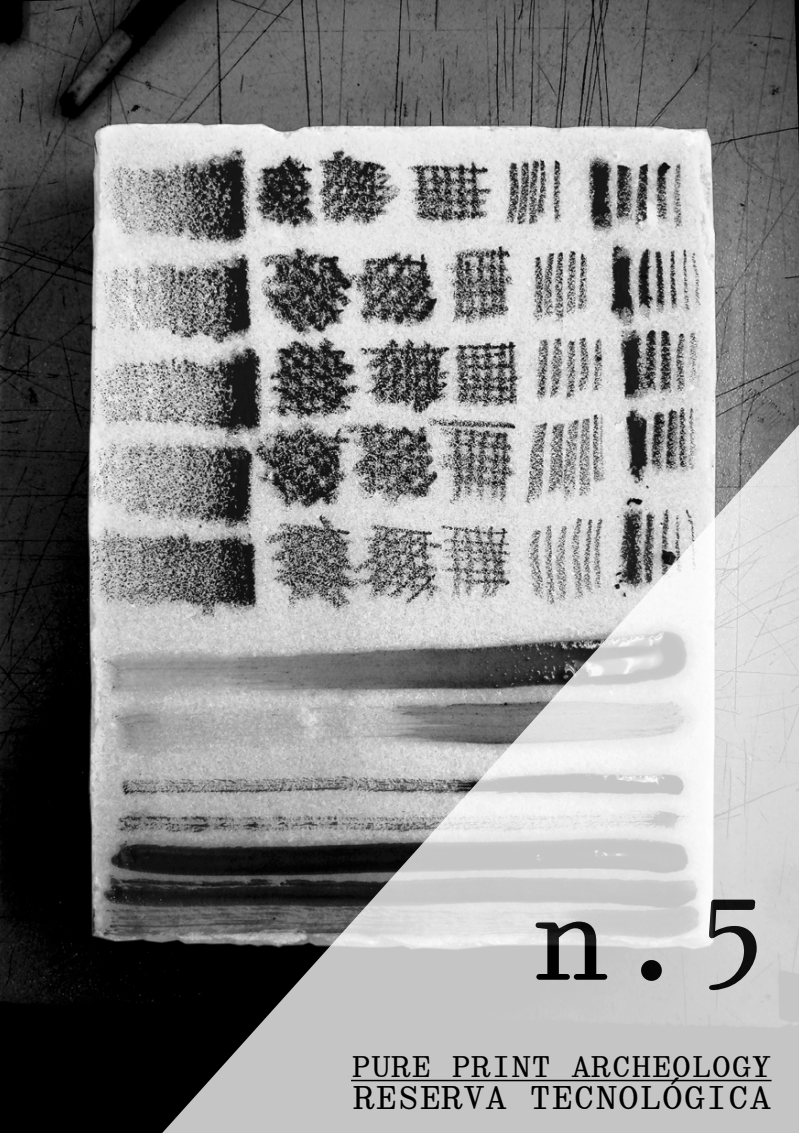
livro
Reserva Tecnológica n.3
As a group of interest originated within a fine art and design context, we are sensitive to reflecting on how to link research to diverse publics, including museum professionals, community members, and academics, and to foster interdisciplinary and transdisciplinary discussion. Further, we are willing to take creative approaches in our research that may result in the future collective understanding of printmaking practices, promote a shared practice on under-researched materials, one that will allow for new interpretations and improved approaches to collections, foster interpretation, preservation, treatment, and display of prints and related artifacts.
- Edição
- Graciela Machado
- Ano
- 2025
- isbn | issn
- 2975-8661
Editorial
This meeting was organized in the context of previous similar initiatives, such as the Pure Print International printmaking meeting (the 1st, 2nd, 3rd, 4th, and 5th editions). It also marked the creation of the local interest group PPA (Pure Print Archaeology), and the 6th Modos de Editar integrates the PPA as a transdisciplinary event of reflection on the reproduction and dissemination of the image.
The idea of organizing a one-week research meeting is to hold an event to work with invited specialists from various sub-disciplines or specialties who joined us to contribute with their unique perspectives. Several students in this interest group benefit from Master’s and Ph.D. scholarships funded by FCT. Their programs are based on “technological archaeology” to study the history and practice of 19th century and 20th-century photomechanical printing processes. For over five years, our research not only has led to new insights into the physical history of relatively obscure processes, including photo enamel, gillotage, photo engraving, and reprographic printmaking, as we have been setting up working practices and ways to engage with information and construct knowledge quite unique within artistic research. We also aimed to discuss and reflect upon working practices with archivists, conservators, museum curators and artists. Our mission was to establish connections and to discuss technological archaeology to help interpret local collections and promote a different perception of the possibilities of photomechanical printing for fine art, design, craft, and cultural heritage.
As a group of interest originated within a fine art and design context, we are sensitive to reflecting on how to
link research to diverse publics, including museum professionals, community members, and academics, and to foster interdisciplinary and transdisciplinary discussion. Further, we are willing to take creative approaches in our research that may result in the future collective understanding of printmaking practices, promote a shared practice on under-researched materials, one that will allow for new interpretations and improved approaches to collections, foster interpretation, preservation, treatment, and display of prints and related artifacts. As a group of interest, we organized discussions and seminars, which were attended by specialists that wished to meet and discuss such issues with us.
Graciela Machado
Rui Vitorino Santos
Sobre
Reserva Tecnológica é uma publicação períodica, lançada após uma exposição organizada pelo grupo Pure Print Archelogy (i2ADS/FBAUP). Reserva Tecnológica publica fichas técnicas expandidas, preparadas especificamente para acompanharem os objetos em exposições organizadas pelo PPA. As fichas técnicas expandidas são habitualmente constituídas por um texto e por ilustrações de carácter instrutório, produzidas pelos artistas e investigadores. Reserva Tecnológica publica as fichas técnicas na língua originalmente redigida para o contexto da exposições apresentadas. Na mesma publicação as fichas técnicas poderão surgir com diferentes traduções. Reserva Tecnológica não pretende ser um catálogo mas um objeto editorial autónomo, que dá a comunicar a um público abrangente e não especializado, a produção e a investigação do PPA.


